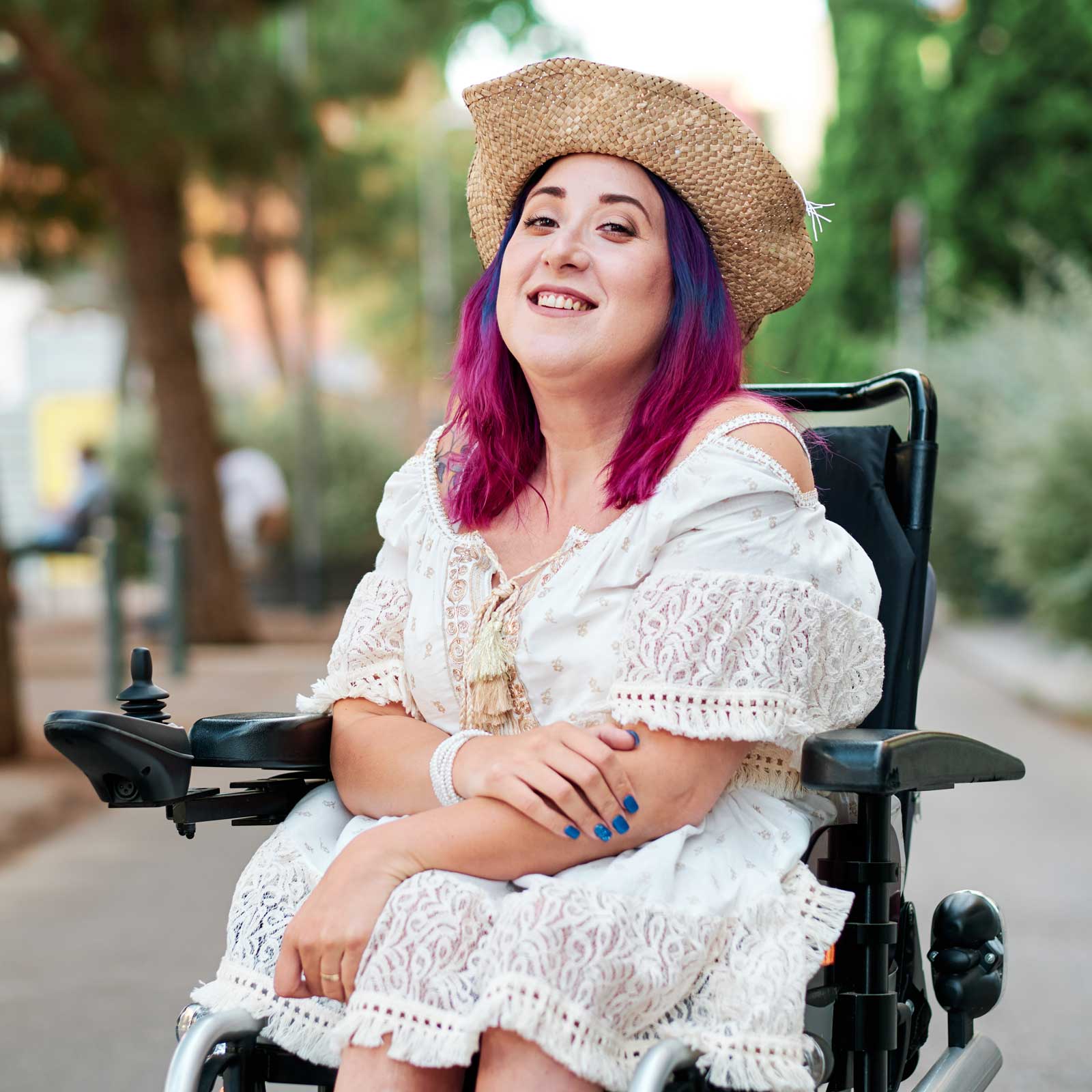By Joanna Willis
Fashion is a minefield at the best of times; skinny jeans – in or out? Girdles – out, right? And what the hell are ‘cut-outs’ (a y2k thing apparently, a style that, unfortunately, is back). When you have a spinal cord injury and must deal with poor access to shops, pressure sores, dysreflexia, and dressing/undressing issues, it can be a nightmare (Krassioukov et al., 2009). It is difficult to find brands and shops that cater for people with disability and so we experience numerous barriers like non-existent or inadequate access due to stairs, heavy doors, and high shelves and most shops don’t provide adaptable clothing for people with disabilities. The sudden transition from being a regular able-bodied person to being excluded from the mainstream can be devastating to our sense of self and self-esteem, and the poor access to clothing compounds this. Not only does it contribute to our sense of exclusion by actively restricting our equal access, but it also restricts our ability to dress appropriately for work and leisure activities which can lead to further exclusion, stigmatisation, and poor treatment. It’s no wonder that people with disabilities report finding appropriate clothing as a major issue for them!
Over 4.4 million Australians (approximately 18%) report as having a disability, with 78% of them reporting a physical impairment as their primary disability (“Disability, Ageing and Carers, Australia: Summary of Findings, 2018”, 2022). Globally, there are an estimated over 1 billion people who have a disability (“Disability and health”, 2022). Not only is this a human rights issue but it is a major market to dismiss. Although there are some brands catering specifically for people with disabilities, we need more research into users’ needs because many of the options are either too restrictive, too hard in the seat, or don’t accommodate in other ways like dressing or adaptability to medical devices. There needs to be a greater variety of options and styles with lower price tags. Ultimately, providing equal access by ensuring physical access to shops, as well as existing stores holding disability specific, adaptable clothing is imperative for us if we are ever to reach equality.
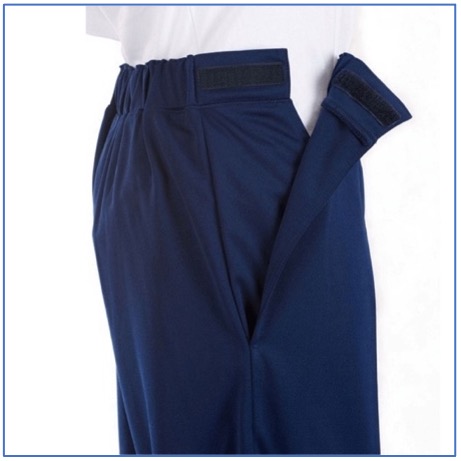
This of course is not an easy feat because despite the numbers we are still a relatively small market and have such niche needs. Luckily, there are some brands that cater for people who have disabilities, with styles designed for people who use wheelchairs – and some of them are genuinely nice! Alternatively, we can choose loose-fitting, elasticated, less restrictive options from mainstream shops. Particularly options that are made out of soft, preferably natural materials.
I’ll start with the disability specific. These are great as there are clothes ranging from formal attire to loungewear, and jeans that stay permanently in the seated position. There are the more traditional, let’s-face-it-daggy brands like these Caring Clothing pants. They are loose fitting, elasticated, and have Velcro side openings making them easy to put on and take off. The brand has many different items and styles for people who use wheelchairs, including soft gloves for people pushing manual chairs. The company has clothes and other items for both men and women, young and old, including more fashionable brands like this pair of soft bamboo leggings or wide legged pants.
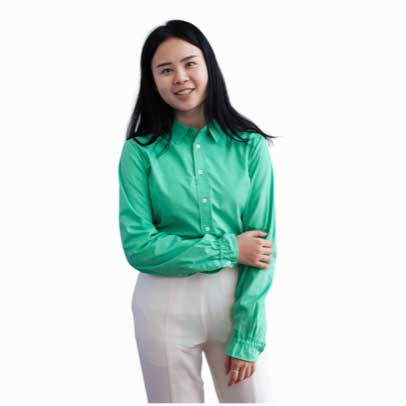
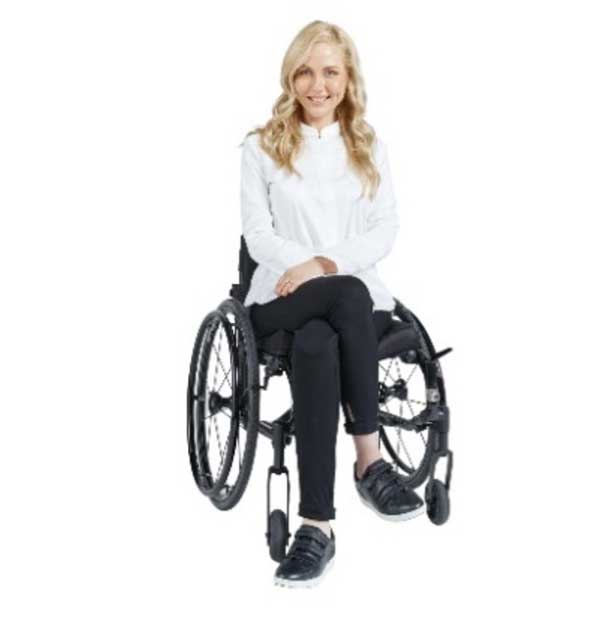
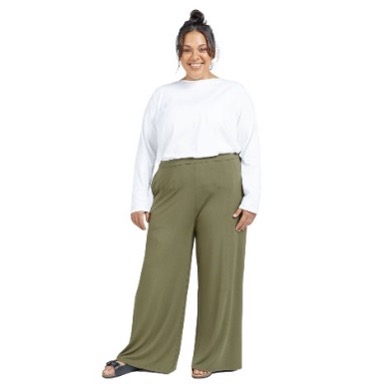

Christina Stephens, an Australian designer, has an awesome range of stylish clothes for men and women, designed specifically for wheelchair users and others with mobility issues. The range includes items designed so they don’t ride up at the back or bunch on your lap like this gorgeous jacket.
For the more label conscious, Tommy Hilfiger has designed the first runway fashion label for people with disabilities available through The Iconic. It features items for both men and women as well as children. This cool pair of jeans for teens has been designed to be easily pulled on with hooks and elastic waist, and is also comfortable to wear.
Another option is the Australian company Every Human which provides a range of options for people with disabilities, I include those with sensory issues. They have underwear, outerwear, accessories, and best of all shoes that are not crazy daggy. Shoes like these canvas zip-ups will set you back around $100, while a pair of zip-up Uggs $169, and Dr Martens $319. While that is fairly expensive, clothes can be purchased with NDIS funding, so it’s important to include this in your plan.

Unfortunately, many of the nicer brands are not stocked in Australia, but can still be purchased online. This makes it difficult to return items that don’t fit; however, it still provides more choice – and sometimes there are cheaper options. For example, I have always really struggled to find footwear that does not cause pressure sores. Even a $500 a pair made-to-order proved unwearable for me. But recently Islamic Bazaar on Etsy.com a few months ago and for the first time in over five years I have been able to wear something other than woollen or cotton socks.
Not only are the socks super soft, but they also have a zip down the sides and so are easy to slip on (I suggest getting a larger size than you would normally use), and they look like a regular shoe for the most part. Although they may not be appropriate to walk around in outside due to the lack of a hard sole, they are excellent if you get around in a wheelchair. Prices range from between $17 to $100 and there are many different shops on Etsy selling them. I purchased 2 pairs from Islamic Bazaar and found them great to deal with, prompt, and friendly. If these are not your style, then there are plenty more options on Etsy for handmade soft leather moccasins that look equally as comfortable.
Finding suitable clothing is particularly difficult if you have cultural or religious dress requirements, but there are organisations out there like Disabled Muslims Australia who provide information on where to access these. From what I can find, these organisations are few and far between, however, mainstream options can be adapted with a little assistance. Ultimately, it is important to keep in mind that although finding clothing can be difficult when you have a disability, there are brands out there that cater for us that can be purchased where the NDIS funding.
References:
- Disability and health. Who.int. (2022). Retrieved 6 October 2022, from https://www.who.int/news-room/fact-sheets/detail/disability-and-health.
- Disability, Ageing and Carers, Australia: Summary of Findings, 2018. Australian Bureau of Statistics. (2022). Retrieved 6 October 2022, from https://www.abs.gov.au/statistics/health/disability/disability-ageing-and-carers-australia-summary-findings/latest-release.
- Krassioukov, A., Warburton, D., Teasell, R., & Eng, J. (2009). A Systematic Review of the Management of Autonomic Dysreflexia After Spinal Cord Injury. Archives Of Physical Medicine And Rehabilitation, 90(4), 682-695. https://doi.org/10.1016/j.apmr.2008.10.017
- Laleh, L., Latifi, S., Koushki, D., Matin, M., Javidan, A., & Yekaninejad, M. (2015). Assessment of Attention to Clothing and Impact of Its Restrictive Factors in Iranian Patients with Traumatic Spinal Cord Injury (ACIRF-SCI): Introduction of a New Questionnaire. Topics In Spinal Cord Injury Rehabilitation, 21(3), 257-265. https://doi.org/10.1310/sci2103-257
